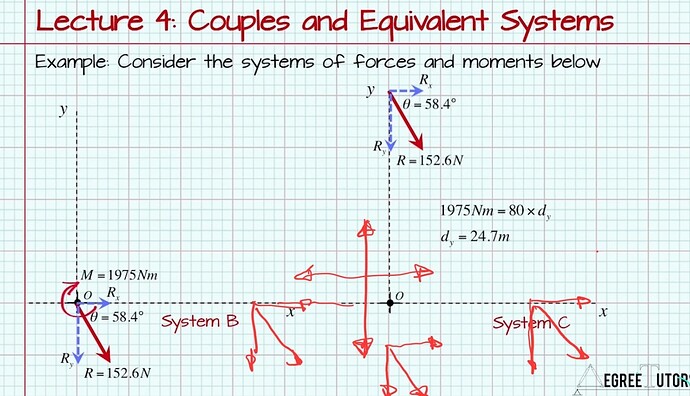Questions and discussion for this lecture live here. Fire away by hitting Reply below ![]()
Question regarding lecture: 5. Couples and equivalent systems 1:45 min.
If I sum the couple forces as we did in the previous lecture with the moments, I get the same result as summing perpendicular distances 951.6 Nm.
Can you explain why you say “Horizontal forces balance and Vertical Forces Balance”?
The projections are equal and in opposite directions, but each of them have produce the moment.
Hi, I’m not sure I fully understand your question so please feel free to follow up if you’re still not clear.
Remember that there are three conditions for 2 systems to be equivalent:
- The sum of the vertical forces must match
- The sum of the horizontal forces must match
- The sum of the moments must match
This is why I refer to horizontal and vertical force balance.
Seán
To be clear, this is the thing I cannot understand. Second equation says moments in each system must be equal.
If I calculate moment for force A=
40 × 11 + 69.3 x -5 = 93.5 Nm
And B =
40 x (-8) + 69.3 x 17 = 858.1 Nm
I watched all the video and made hand calculations understood finally this concept…
Last question for this.
On x and y axis there are always 2 solutions when the force is left or right or up and down the origin to generate the same moment?
Yes, you can generate the required moment using either of the orthogonal force components…
- sliding the horizontal component up or down the vertical axis, or,
- sliding the vertical component left or right along the horizontal axis.
Seán
Thank you. It means there are two solutions for each axis.
There are two solutions, one for each axis.
S

